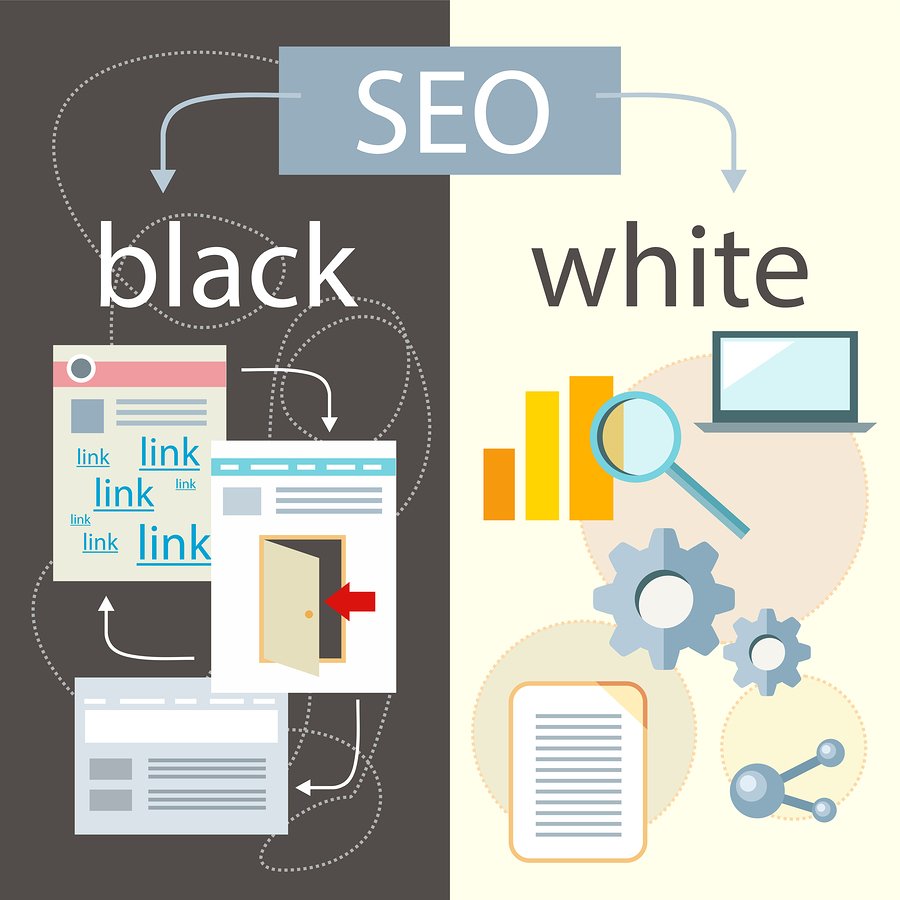Tips To Performing Ethical On-Page SEO
To the uninitiated, it might be news to say that there is an unethical mode of performing on-page SEO. For the majority of domain and business users out there, the Internet is a Wild West of strategy and tactics where almost anything goes.
Yet the reality is quite different. Search engines like Bing, Yahoo and Google have an army of software engineers out there who are updating their internal platforms with regular ease. They are now incredibly savvy when it comes to con artists and tricksters out there looking to get an illegitimate leg up on the competition.

Ethical SEO is always the way to go!
Ethical on-page SEO is not just a case of avoiding repercussions, but it actually makes sense from a performance perspective. The Google’s of this world are in the business of rewarding good behaviour to back those sites that are organic traffic-making machines. So it is wise to learn best practice as fast as humanly possible.
In that vein, let us examine how best to optimise your site to satisfy the current criteria in 2018.
Target High Traffic Generating Keywords
The first step you will have to embark upon when conducting an SEO process is to audit your current performance. A warts and all approach is the only way to iron out the kinks to learn from the weaknesses and build on the strengths.
Perhaps your content is engaging enough to build an audience, but it does not have the cut-through. Whatever the scenario is, your ethically driven on-page SEO must be built around keywords that garner traffic. Lots of it if possible.
Google’s Keyword Planner tool is considered a one-stop-shop for all things keywords. What this platform will allow you do is to curate keywords that makes your site far more visible to the casual consumer who might be interested in your offerings, but don’t know where to find you.
This outlet will issue the data an easy to understand format to break down exactly how you are performing and outline what terms can be utilised. Think of it like a SWOT analysis where you are gauging the strengths, weaknesses, opportunities and threats of potential keywords.
The filters will also give you details on suggested bids and competition for these keywords, with the high traffic generators not coming too cheaply. Yet they will provide bang for buck, as is illustrated by the organic and ad impression share categories.
Organic traffic is the lifeblood of any SEO campaign that is run ethically. Should you tick this box by opting into keywords that garner the most attention, then you are playing by the rules and investing in maximum exposure.
Place Those Keywords In Hotspots

Choosing the right keywords is only half the battle, you then have to ensure they are positioned correctly.
So you have settled on a strategic set of keywords. Job well done. Now the real artistry comes with the placement of those terms as you want the ability to signal as often as possible to Google that you are an authority within the niche.
- Domain name/URL: This is the starting point and for some operations, this is either impossible or too late to go back. The domain name and URL is an often overlooked part of the keyword equation, but it does have a direct influence and relationship with the practice.
- Titles: That text sticking out in highlighted blue will be what is known in SEO circles as a title. It is the phrase that will define what your site is about and it is paramount that your keyword/s are placed in this section of approximately 50-70 characters in length.
- Headings: If keywords are relevant to the page they are directing to, then headings are vital when it comes to the content that falls beneath them. From H1 to H2 and H3 headings, order these words in list of priority. This will create a hierarchy of sub-categories, with your best performing keyword a prime H1 heading candidate.
- Meta descriptions: Rather than acting as a significant gauge for search engines, the description section is more relevant for the end user. Keywords that are traffic generators will always catch the eye of the consumer and this is a chance to reinforce the connection between your page and that searched for term.
- Alt-Text: Every single image that is uploaded onto your page will issue an option for alt-text. This is the wording that will emerge should that page and/or image does not sufficiently load, giving you another opportunity to boost your use of the keyword despite its apparent irrelevance.
- Content: Last but not least is the actual content itself. Whether it be through written text in blogged paragraphs or as part of a multimedia feature, it is advised to implement the keywords sparingly i.e. no more than once or twice per paragraph.
It would be a major misgiving to think that you can apply a helter skelter approach to your keywords. Surgically pick and chose where you place them from this list and you will see a strong response from the search engines.
Longevity in the Long Tail Keyword
So much in the game of searching comes down to specificity – just how far down can you narrow what someone will search for? In terms of long tail keywords – that can be quite narrow.
The reality is that the better you can garner your long tail, the more likely you are to find traffic that is after a specific niche, sub-niche or category that is relevant to them.
Should your enterprise be centered around handyman tools, you might be wanting to create a campaign that focuses on the keywords: “DIY toolkit.” That will see you compete with a number of the heavy hitting outlets across the country, but what about a long tail that lets you dominate a particular search?
Perhaps you could try any of the following:
- “DIY toolkit for beginners”
- “DIY toolkit for new homeowners”
- “DIY toolkit for stay at home dads”
- “DIY toolkit for aspiring tradies”
This field can allow you to be creative, but do your research to discover where a large portion of your consumer base finds you online. Feed that need should they be after something that is less broad than just a “DIY toolkit.”
Speed Efficiency

The speed of you website has never been more important.
In an age where time is becoming more of a finite resource, the loading speed of your site can be the make or break metric that determines the success of your domain. Take any site from any niche and see what pages rank highly. All of them without fail will be compatible with various devices to be geared towards all sectors of the online community.
A potential shopper might embark on your site from a paid advertisement or through an organic search, tapping that click button to read more. The loading signal emerges, the wait continues and before you know it, they’ve gone back to find another domain that will give them actual service.
Don’t fall into this trap because sites that overload their content, fail to issue the right update on their internal software or simply don’t invest in a site that’s mobile-ready will fall behind. It could take them weeks, months or years to recognise the problem, and by that stage the lost revenue will really hurt.
There is no cheap trick or gimmick to improving your site’s speed, with this gauge being right up there on Google’s list of SEO priorities. With so many elements at play to consider, it can be easy to overlook whether or not your page loads in time.
Check your URL through these various software applications:
- Responsinator
- mobiReady
- Google Mobile-Friendly Test
Get Creative With Multimedia Integration
Your content must be rich with a variety of multimedia to truly reach your maximum potential in the eyes of search engines. They are not only a great way of boosting your keyword numbers, but manages to create higher click-through rates and time spent on pages navigating and browsing.
Fuse any of the following content types to implement your ethical on-page SEO:
- Blogging
- Video
- Q&A
- Podcast
- Ebook
- Photo collage/gallery
- Testimonials
Social media is one of the key pillars of off-page SEO, a department to be examined at a later date.
Black-Hat Tactics To Avoid

Always steer clear of black-hat SEO.
While we have identified the positive steps you can perform to boost your SEO health, it is worth pointing out the pitfalls that dubious enterprises engage in.
- Keyword stuffing and stacking – the process of repeating the same keyword to artificially boost the standing and therefore the SERP ranking.
- Cloaking of keywords – hiding these terms inside hidden links or behind images.
- Spamming blogs – using software tools to create content that is unnecessary and only for the purpose of deceiving the search engines.
- Content duplication – either using a mirrored site or other accounts to replicate the exact same content.
- Page swapping – sending the user to a page unrelated to the keyword they clicked on.
- Domain squatting – purchasing and holding domain names purely for the purpose of selling them off for profit.
There is a litany of on-page and off-page black-hat tactics that have been utilised before, but each and every time they get found out. The search engines have the capacity to blacklist your brand altogether or embark on further penalties.
Summary
Like with anything else in life, the best approach to take is an open and honest one. Loopholes will likely be exposed and the fallout will be ugly. To ensure that your on-page SEO process is working smoothly, stick by these techniques and play by the rulebook to the best of your ability.
There will be some clever tricks of the trade to use down the line, but those that happen to master the basics are the sites that always soar past expectations.
How have you gone implementing ethical on-page SEO? Ever been tempted by stuffing keywords or trying a shortcut before? Let us know your experience in the comments section below.

Read ➡ Mobile SEO vs Desktop SEO: Who Will Come Out On Top?

We are a friendly and reliable team that pays detailed attention to your projects and management of your brand. Our team at SEO Shark has a passion for all things online. We constantly innovate using the latest professional techniques and strategies.



